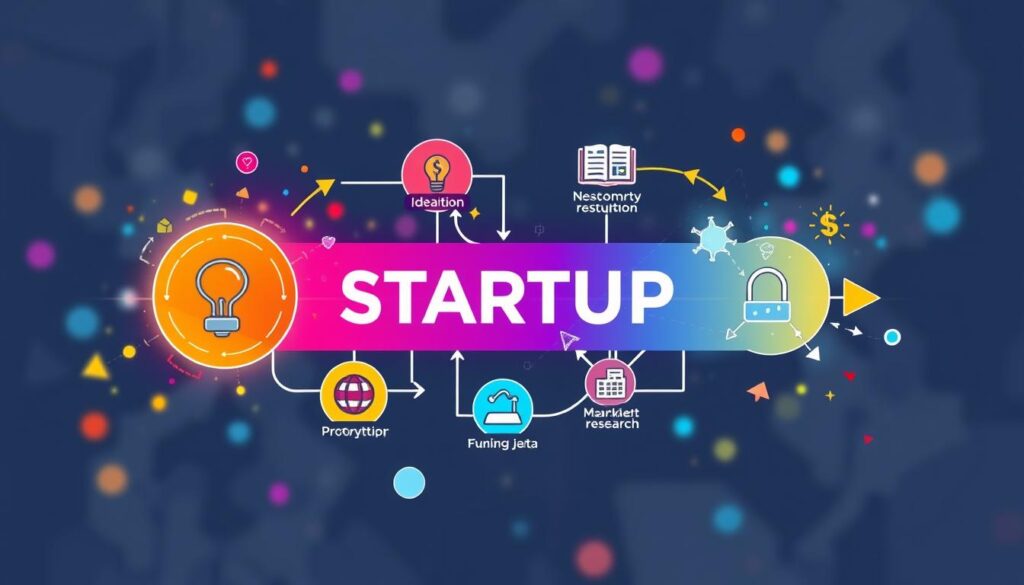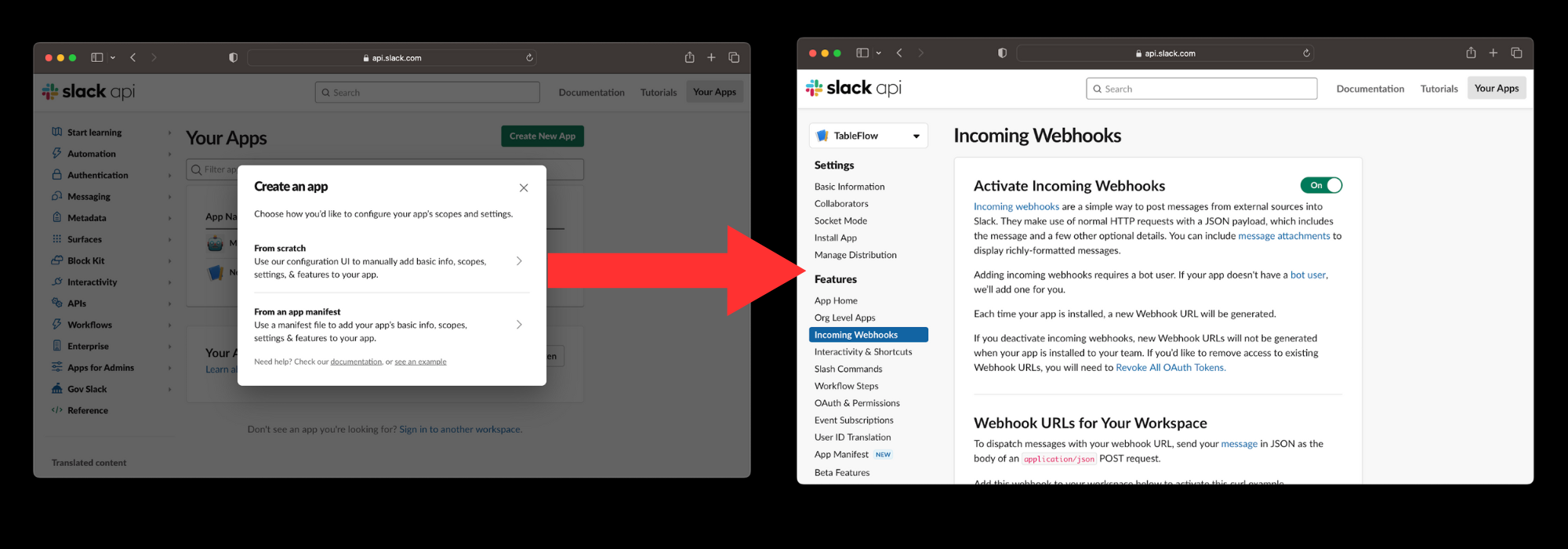The startup journey is a dynamic path that turns ideas into thriving businesses. This journey has many stages, each with its own challenges and achievements. It starts with an idea and moves through funding and growth. Understanding these stages helps entrepreneurs prepare for success.
At the core of this journey is solving a problem and adding value to a market. It begins with research, market analysis, and a detailed business model canvas1. Founders then validate their product, create an MVP, and refine it based on feedback1.
As the startup grows, it goes through different funding stages. It starts with personal funds and incubators1 and then seeks funding from angel investors and crowdfunding1. The goal is to get Series A, B, and C funding from venture capitalists. This funding helps the startup grow its product, attract customers, and expand1. Throughout, the focus is on finding product-market fit and showing growth to investors.
Key Takeaways
- The startup development process involves defining a vision, establishing key milestones, and developing a roadmap to achieve goals.
- Successful startups focus on solving specific problems, conducting market research, and iterating based on customer feedback.
- The process includes building prototypes, validating the business model, and seeking initial funding from sources like personal funds, incubators, and angel investors.
- Securing Series A, B, and C funding from venture capitalists enables startups to develop their product, acquire customers, and scale their operations.
- Maintaining a relentless focus on product-market fit and demonstrating traction is crucial for securing funding and long-term success.
Defining the Startup Lifecycle Stages
The startup journey is complex, with many phases each with its own challenges. Startup entrepreneurs must navigate these stages to succeed and grow2.
Early Venture Phase
In the Early Venture phase, startups work on a scalable idea and build a prototype. They also check if the market needs their product or service2.
Series A Phase
The Series A phase starts with getting initial funding. This allows startups to grow and set up sales teams. They aim to get more customers and increase revenue2.
Growth and Maturity Phase
This phase focuses on getting stable funding and keeping a focus on performance. Startups also look at expanding or exiting the market2.
Each stage has its own challenges and needs a specific approach. By understanding these stages, startup founders can better navigate and succeed3.
CEMEX Ventures defines the startup lifecycle stages. These stages help startups understand their journey towards success and relevance in the market2.
| Startup Lifecycle Stage | Description |
|---|---|
| Pre-Seed Stage | The initial idea phase where the startup’s ability to address industry pain points is assessed. |
| Seed Stage | Focuses on validating the business model and developing initial prototypes to test the startup’s value hypothesis. |
| Early Stage | Marks the evolution of the idea into a product or service in the market, with a focus on launching a Minimum Viable Product (MVP). |
| Growth Stage | Indicates strong market demand and growth in customer base and revenue, with high emphasis on profitability and recruitment. |
| Expansion Phase | Signifies the scaleup of a startup to consider more ambitious goals like internationalization, new sectors, and increased hiring. |
| Exit Phase | Although not mandatory, often involves selling the startup through options like founder shares sale, acquisition, or Initial Public Offering (IPO). |
Scaleups, as defined by the Scaleup Institute, are companies that grow by more than 20% each year. They are key in the startup lifecycle2.
CEMEX Ventures supports startups at every stage. They offer competitions and help with growth and expansion through their connections23.
The Startup Development Process: From Idea to Launch
The startup journey starts with startup idea validation through market research and competitor analysis4. This first step is about finding big problems and good solutions. It also helps the team agree on goals, mission, and future plans4.
Next, a detailed business plan is made. It outlines the company’s goals, who it will serve, and its financial plans5. This plan is like a map for the business. It also helps attract investors, like loans or venture capital5.
- Creating a prototype and testing it with users is key4.
- Improving the product based on user feedback is crucial for success4.
- Building a strong team and culture are also important6.
As the startup grows, it focuses on scaling the business. It aims to get more customers and make more money without spending too much4. Successful startups stay flexible, always ready to change and face new challenges5.
| Startup Development Phases | Key Objectives |
|---|---|
| Formation Phase |
|
| Validation Phase |
|
| Growth Phase |
|
The startup journey is complex but rewarding. It needs a smart plan, flexibility, and a focus on customer value6. By following this path, entrepreneurs can make their ideas into lasting businesses5.
Building Your Minimum Viable Product (MVP)
Creating a Minimum Viable Product (MVP) is key to checking if your startup idea works. The MVP should have the main features that solve the problem you’re trying to fix. Learning how to make an MVP includes quick prototyping, focusing on the most important parts, and using what’s already out there7.
Validating Your Product Concept
Testing and improving your MVP means getting feedback from users, looking at how they use it, and making small changes. Successful MVPs, like Airbnb’s first site, fix a specific problem for a certain group of people. They also set the stage for growing bigger7.
MVP Development Strategies
When making an MVP, it’s important to know who your ideal customer is and what makes your product special. Having a budget for your MVP, including costs for making it, design, marketing, and running it, helps ensure it launches well78.
Testing and Iteration Process
The time it takes to make an MVP can be a few weeks to a few months, based on how complex it is. Testing and improving your MVP based on what users say is key to making it better and getting investors interested78.
| Example | Description |
|---|---|
| Dropbox | Started with a basic video to demonstrate its file-syncing concept7. |
| Evolved from a simple social media tool known as ‘twttr’7. | |
| Amazon | Began as an online bookstore and later grew to offer more products, showing the MVP’s success78. |
| Spotify | Tested key ideas with a technical MVP prototype7. |
| Zappos | Started as an MVP without any stock7. |
| Groupon | Launched its MVP as a two-for-one pizza deal to 500 people7. |
Creating a solid MVP is key to getting investors and raising capital.7
The Lean Startup method, shown by Henrik Kniberg’s MVP skateboard car image, focuses on being efficient and learning from customer feedback with little initial investment78.
Securing Funding and Financial Growth
Getting startup funding is key for new businesses. Founders can look into bootstrapping, seed funding from loved ones, angel investors, and venture capital9. Venture capital firms invest in startups with big growth potential for equity9. Angel investors give personal funds and advice to early startups9. Crowdfunding lets startups raise money from many people through rewards or equity9.
The seed funding stage checks if the business idea works and makes a prototype10. Seed funding can be a few thousand to several million dollars. Startups usually want funding for $3 million to $6 million10. Later, they might look for Series A funding to grow and get more customers11.
In 2023, the U.S. saw a big Series A funding round of $11 million11. This was much bigger than the seed round, which was four times smaller11.
Good financial planning is vital at every step. This includes making realistic forecasts, managing money, and getting ready for more funding11. Founders need to show detailed financials and growth plans to attract investors later on11. Successful startups use different funding sources and keep investors updated on their progress.
Getting venture capital and other funding can be tough but is key for startup growth. By looking at various funding options, making a solid financial plan, and talking well with investors, startups can do well in the long run91110.
Implementing the Lean Startup Methodology
The Lean Startup methodology offers a clear path for startups to grow from idea to success. It focuses on understanding customers and using agile development for quick learning12.
Customer Discovery and Validation
Lean startups start by learning about their target customers. They do this by talking to customers, watching how they act, and getting feedback on early versions of their product13. The aim is to find out what customers really need and want.
Agile Development Practices
Lean startups use agile development, which values flexibility and teamwork. They build, test, and learn fast, making changes based on what customers say1213. This “build-measure-learn” cycle helps them make smart choices and avoid wasting time on things customers don’t like.
Pivot or Persevere Decision Making
A big part of Lean Startup is being ready to change direction if needed. Startups keep an eye on data, customer feedback, and market trends to decide if they should keep going or try something new12. This flexible approach helps them stay on track and succeed in the long run.





